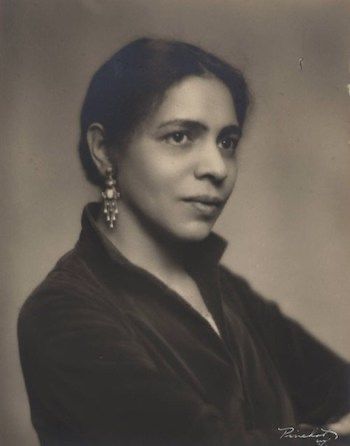
Between Two Worlds: Nella Larsen
LVXXV. 1 By Avery Means
Between Two Worlds- Nella Larsen, By Avery Means
What does it mean to belong? The search for identity and fulfillment in community while drifting between two worlds is both a burden and a longing—a restless tide that pulls some toward home and pushes others toward the unknown. This tension shaped the life and work of Nella Larsen, an American novelist whose heritage and experiences left her suspended between cultures, never fully embraced by one world or the other.
Born in Chicago in 1891 to a Danish mother and an Afro-Caribbean father, Larsen’s racial identity set her apart from the predominantly white Danish immigrant community in which she was raised. After her father’s death, her mother remarried a Danish man, further isolating Larsen within a family and society that could never fully understand her position. This sense of unbelonging followed her throughout her life, shaping her relationships, her career, and most notably, her writing.
Nowhere is this more poignantly explored than in Quicksand (1928), a novel that closely mirrors Larsen’s own search for identity. Its protagonist, Helga Crane, wrestles with the same uncertainty and is torn between the expectations of society and the desires of her own heart. Like Larsen, Helga is a woman of mixed heritage, caught between two worlds yet never truly at home in either.
Helga begins the novel as a teacher at Naxos, a fictionalized version of the Tuskegee Institute in Alabama, where she feels suffocated by the rigid expectations of Black respectability, imposed externally by the culture of the Jim Crow South. Disillusioned, she embarks on a journey—one that takes her from the conservative South to the progressive intellectual circles of Harlem, to the cosmopolitan elegance of Copenhagen, and finally back to the restrictive confines of Black womanhood in America.
Each move Helga makes offers the illusion of a fresh start, yet every new environment ultimately leaves her unfulfilled. Harlem’s artistic and intellectual circles give her a taste of freedom, but she soon becomes disenchanted with what she perceives to be performative progressivism instead of true activism.
Unsatisfied with life in Harlem, she considers leaving for Denmark.
"She began to make plans and to dream delightful dreams of change of life somewhere else, someplace where she would be permanently satisfied. . . She let herself drop into blissful sensation of visualizing herself in different strange places among approving, admiring people where she would be appreciated and understood" (59).
But in Denmark, she experiences a different kind of alienation, treated as an exotic spectacle rather than an accepted equal. Even marriage and religion, which she turns to in desperation, fail to provide lasting fulfillment.
Larsen’s writing captures the ache of feeling foreign in every space, unable to assimilate yet unable to completely reject any one identity. Quicksand is not just a novel about Helga Crane—it is Larsen’s own frustrations laid bare, her critique of the limited roles available to Black women, her reflection on the dissonance of being both an outsider and an insider.
For Larsen, Denmark may have represented a refuge, an escape from American racial divisions, yet it was never truly home. At the same time, the Harlem Renaissance—though a space for Black intellectual and artistic expression—never fully embraced her either. Helga’s experiences in Quicksand reflect this same struggle: her desire for belonging, her distress with every place she hopes will offer it, and her eventual resignation to a life that feels like a compromise.
After the brief success of Quicksand and her second novel, Passing (1929), Larsen faded from the public eye, spending her later years working as a nurse rather than continuing her literary career. Yet her voice was never truly silenced. Quicksand endures as a powerful meditation on identity, longing, and the inescapable pull of societal forces.
Like Helga Crane, Larsen may have spent her life searching for a place to belong, but through her writing, she carved out a space where her voice could not be erased. Quicksand remains as proof that even those caught between worlds leave behind stories that refuse to sink.
Further reading:
Larsen, Nella. Quicksand, edited by Thadious M. Davis, Penguin, 1987.
